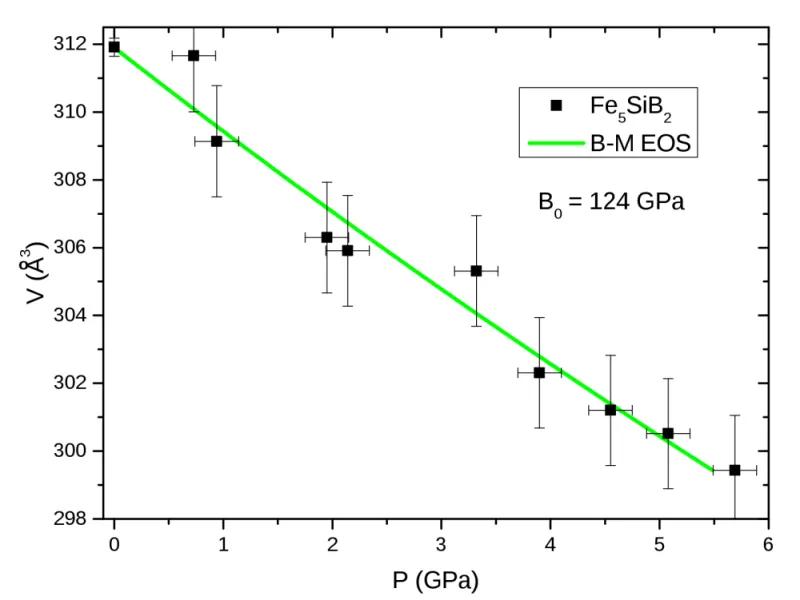In recent years, the search for new materials suitable for preparation of
rare-earth-free permanent magnets has led to a renewed interest in the magnetic
properties of Fe compounds with an anisotropic crystal structure, which may
promise sizeable magnetic anisotropy and high Curie temperature.
The Fe5SiB2 phase was discovered in 1960 by
B. Aronsson and I. Engström.
It possess a high Curie temperature of 845 K and a high value of saturated
magnetization of about 9 μB / f.u..
The compound crystallizes in the tetragonal crystal structure of Cr5B3
type with lattice parameters of about a = 5.43 Å and c = 10.33 Å [1-5].
Unfortunately, the resulting magnetic anisotropy is not sufficient to present high
coercivity.
The magnetic properties were previously studied by chemical substitution which
can lead to significant changes of saturated magnetization and magnetic
anisotropy [2,4,5].
Pure Fe5SiB2 has uniaxial magnetocrystaline anisotropy
(at room temperature) and undergoes a spin-reorientation transition at temperatures
below 200 K to easy-plane anisotropy.
At present, the compound does not exhibit properties suitable for application though
it is a very interesting compound for studying the magneto-structural relations and
pressure/volume effects on magnetic properties.
The previous experimental and theoretical studies of the effect of chemical
substitutions, particularly volume variations and fix spin moment calculations,
motivated us to connect this approach by following the effects of applied
pressure on magnetic and structural properties.
In this work we present the evolution of the unit cell parameters a and
Figure 1. V-P diagram determined using XRD under pressure at room temperature. The obtained data were fitted by the Birch-Murnaghen equation of state (green line).
Acknowledgments. The work of J. K. was supported by the Operational Programme Research, Development and Education financed by European Structural and Investment Funds and the Czech Ministry of Education, Youth and Sports (Project No. CZ.02.2.69/0.0/0.0/16-027/0008215).
[1] T. Ericsson, et al., Physica Scripta 17, 83-86 (1978).
[2] M. A. McGuire, et al., Journal of Applied Physics 118, 163903 (2015).
[3] J. Cedervall, et al., Journal of Solid State Chemistry 235, 113-118 (2016).
[4] M. Werwiński, et al., Phys. Rev. B 93, 174412 (2016).
[5] D. Hedlund, et al., Phys. Rev. B 96, 094433 (2017).
